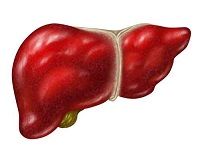Article
Study: Some MicroRNAs Play Role in Fatty Liver
Author(s):
The intracellar lipid deposition, mitrochondrial dysfunction, and insulin resistance associated with non-alcoholic fatty liver disease is likely regulated by microRNAs, particularly in obese patients.

As fatty liver disease in non-alcoholic patients worsens, there is a significant increase in the expression of 6 muslce microRNAs, a team from Lisbon, Portugal found.
In an abstract due to be presented April 23 at the International Liver Congress in Vienna, Austria, Andre Simao of the Research Institute for Medicines in Lisbon and colleagues report on studies using muscle and matching liver biopsy tissue from morbidly obese patients. The subjects were all getting bariatric surgery and all had non-alcoholic fatty liver disease.
The team looked at the patients' muscle RNA. Their goal was to see how micro RNA expression progiles changed at different stages of the disease. They also tried to learn what role these RNAs played in protecting the liver. The protective role of tauroursodeoxycholic acid (TUDCA) was also of interest.
In the study, C2C12 cells were incubated with or without palmitic acid in the presence or absence of TUDCA for charaterization of the insulin signaling pathway, as well as mitochondrial and overall cellular toxicity.
"Our results show a progressive and significiant increase in the expression of 6 muscle microRNAs from steatosis to more severe NASH," they wrote. "These included miR-339-3p, which has been described to regulate glucose synthese, and miR-361, found increased in type II diabetes patients' serum."
They also found that 8 microRNAs were decreased type II diabetes' patients plasma. "Incubation of C2C12 cells with palmitic acid inhibitied insulin-sgnaling while increasing mitochondrial dysfumction and apoptosis, all of which were prevented by co-incubation of cells with TUDCA.
The group's conclusion is that microRNAs associated with type II diabetes and mitochondrial dysfunction are differenly modulated with non-alcholic fatty liver disease severity in the muscle, and that miR-339-3p arises "as a novel mechanistic play."
They also suggest that TUDCA may ameliorate muscle dysfunction in those with the disease. The team had no conflicts to disclose.




